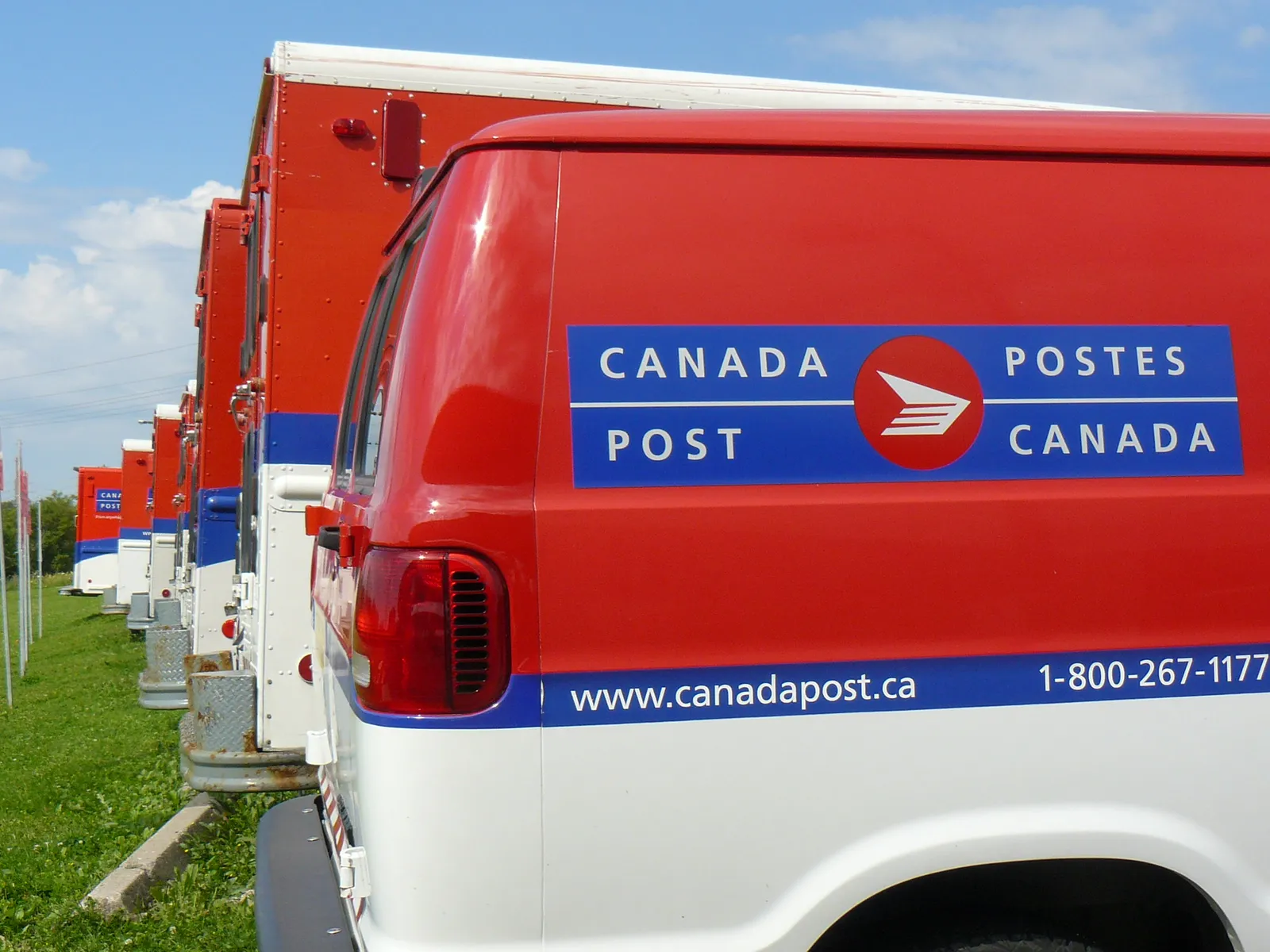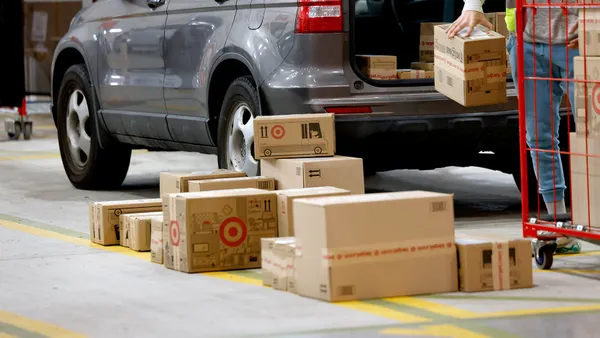Canada Post workers have been on strike since Nov. 15, shutting down the government-owned carrier's operations throughout the country.
The work stoppage comes after Canada Post failed to reach new contract agreements with the Canadian Union of Postal Workers, which represents more than 55,000 of the carrier's employees. The union is calling for pay raises, safer working conditions and an expansion of public postal services.
As negotiations continue, shippers with last-mile delivery needs in Canada are diverting volume to other carriers as they try to keep up with the peak holiday ordering rush. But this response is straining many delivery providers' networks during an already busy period.
Here's what parcel shippers should know about the Canada Post strike, including its impact on shipping times and capacity at other carriers.
How long will the Canada Post strike last?
The strike's duration depends on how soon Canada Post and the Canadian Union of Postal Workers can resolve their differences and reach an agreement.
The parties have exchanged a series of counterproposals on their next labor deal since discussions reignited last week. Jan Simpson, national president of the union, said in a Dec. 4 update that its proposals feature movement on both union and employer demands.
"We all want CUPW members to get back on the job with their rights protected, health and safety issues resolved, wages that reflect inflation, and security for the future in new collective agreements," Simpson said.
On Saturday, Canada Post said it has "made significant moves to close the gap on key issues like weekend delivery, pensions and wages and bring much-needed urgency to the discussions." However, the Toronto Star reported the next day that the union expressed frustration over the carrier’s latest proposal.
"Based on the union's response, what they've put out to the public, they're still far from seeing eye to eye on these proposals," Alison Layfield, director of product development at ePost Global, said in an interview with Supply Chain Dive.
Whenever the strike ends, its impact will continue to linger. When Canada Post service resumes, delays are likely as the carrier delivers stored volume "on a first-in, first-out basis," according to its website.
Maggie Barnett, CEO of LVK Logistics, a fulfillment provider in Canada and the U.S., expects it will take up to 10 days once the strike ends for Canada Post's operations to normalize.
"Everyone's going to come out of the gate sluggish, and there's going to be a lot to do, because there's things just sitting in the system," Barnett said.

How disruptive has the strike been for deliveries?
Delays are mounting throughout the Canada parcel industry due to the strike.
On-time delivery performance in Canada has dropped by 14% since the week of Oct. 28, according to a Dec. 3 report from project44. The company considers a package to be on time if it reaches its destination by the original estimated delivery date.
The steep drop is due in part to Canada Post's major presence in the country's parcel market and limited variety in shippers' carrier rosters, according to project44. While project44 shippers use around six last-mile carriers on average, that falls to less than three for inbound and outbound Canada shipments.
"Because of this lack of carrier diversity, when an event like the postal strike occurs, the Canadian market becomes highly vulnerable to disruptions," project44 said. "Shippers are now scrambling to find capacity and must make tough decisions between cost and delivery time."
The Canadian Federation of Independent Business estimated that the strike would cost small- and medium-sized companies more than $1 billion by Dec. 4, as they grapple with more expensive delivery alternatives and lost orders. One example the federation mentioned was a seed supplier in Prince Edward Island that can't deliver its catalogs during the work stoppage.
"Rather than looking forward to increased revenue, it’s now facing substantial storage fees for the large volume of printed materials and says orders for Christmas will be low," the group said.
Can other carriers pick up the slack?
With packages in the Canada Post network at a standstill, many shippers are scrambling to find alternative delivery options. But securing enough capacity with another carrier is a tall order during the holidays, Barnett said.
"That's creating further delays, because the folks who are taking that Canada Post volume are unable to absorb that volume during peak season," she said.
Carriers are deploying different strategies to manage the volume influx. This is evident in how UPS and Canada parcel carrier Purolator each handled shipments from eShipper, which connects e-commerce businesses with delivery providers.
UPS froze shipments from eShipper for 48 hours, while Purolator is looking to limit the number of packages it picks up from the company, Imtiaz Kermali, eShipper VP of sales and marketing, said during a Thursday webinar.
"We're going to get to the normality a lot faster if we help these carriers think through what their strategy is right now, which is, let's get rid of these clogs, add more capacity and try and come back even stronger over the next two weeks," Kermali said.
UPS did not respond to a request for comment. Purolator is temporarily pausing service to select shipping partners as it navigates "a significant increase in volume," the company told Supply Chain Dive on Thursday.
"This was necessary to maintain the integrity of our network, ensure the health and safety of our employees and allow us to prioritize critical shipments," Purolator said in an email. "We are assessing the condition of our network hourly and will make all attempts to remove the service suspension as soon as possible."
Other carriers are also adjusting in the wake of the strike. On Nov. 29, the U.S. Postal Service suspended its acceptance of international mail to Canada. FedEx has instituted "a temporary limit of five packages per drop-off" at its retail locations to manage higher demand, a company spokesperson told CBC News on Friday.

How can shippers limit disruptions from the strike?
Securing access to carriers that suit your particular shipping needs goes a long way, experts say.
For example, shippers with packages moving from the U.S. into Canada should make sure they're using a "door-to-door" service that doesn't rely on Canada Post for any portion of the delivery process, Barnett said.
Companies also have to consider what areas of Canada they deliver to. While a handful of major carriers can cover around 80% to 90% of the country, that service typically comes with a residential delivery surcharge, Kermali said. Smaller, regional carriers tend not to have this added fee, but they also are limited in coverage outside major cities.
"They do not criss-cross across the country, connecting those regions unless they have an outside partner that could be an airline or a ground partner who will move product from, let's say, Toronto to Vancouver, and then they'll deliver in Vancouver," Kermali added.
Beyond carrier adjustments, companies should also consider how to keep customers happy during the strike, Jen Seran, former director of business operations at e-commerce shipping provider Stallion Express, wrote in a LinkedIn post. This includes providing clear and transparent communication about potential delays, leveraging physical store locations for pickups and offering discounted or free shipping.
"While the current disruptions pose challenges, they also offer a chance to get creative with your logistics," Seran said.























